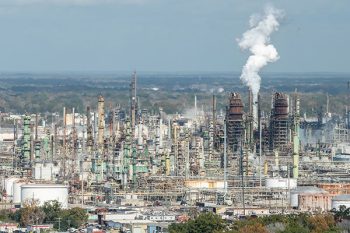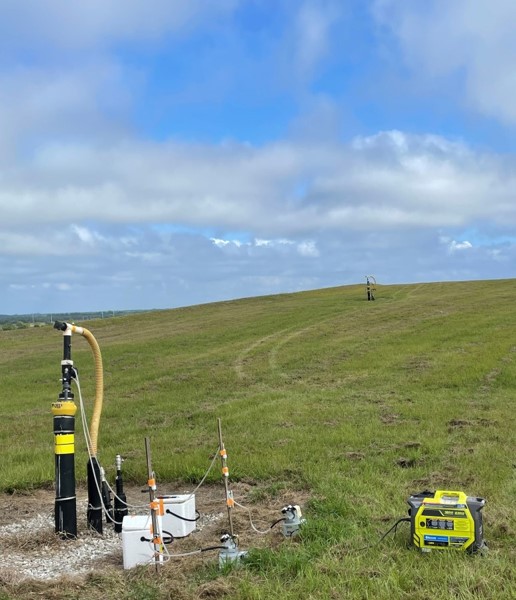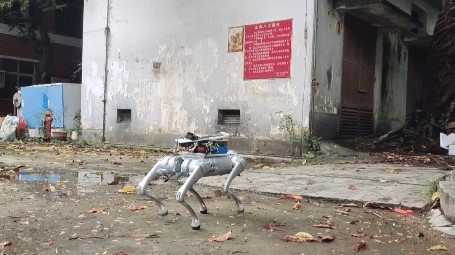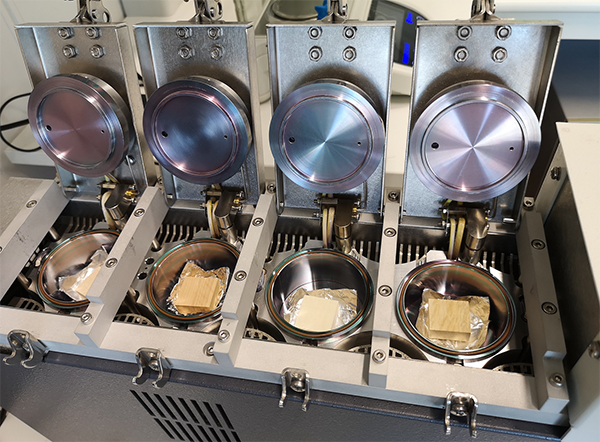FOR IMMEDIATE RELEASE
“Ethylene Oxide in Southeastern Louisiana’s Petrochemical Corridor: High Spatial Resolution Mobile Monitoring during HAP-MAP”
Environmental Science & Technology
Louisiana’s southeastern corridor is sometimes known colloquially as “Cancer Alley” for its high cancer incidence rates connected to industrial air pollution. Most of the region’s air pollution-related health risks are attributed to ethylene oxide, a volatile compound used to make plastics and sterilize medical equipment. Researchers reporting in ACS’ Environmental Science & Technology measured concerning levels of ethylene oxide in this area with mobile optical instruments, a technique they say could improve health risk assessments.

In 2016, the U.S. Environmental Protection Agency (EPA) classified ethylene oxide as carcinogenic to humans, particularly when it is inhaled. Despite significant concern over chronic ethylene oxide exposure for people living between Baton Rouge and New Orleans, there are no published reports of ambient concentrations of the carcinogen that aren’t derived from industry self-reported emissions data. So, Peter DeCarlo and colleagues proposed measuring the levels of this gas using optical instruments that quickly measure airborne chemicals and provide results in real time.
They used a mobile monitoring system with equipment mounted on a small truck or van. These mobile laboratories drove a fixed route along a heavily industrialized portion of the corridor.
- One small truck carried a tunable infrared laser direction absorption spectrometer, which measured ambient ethylene oxide in the surrounding air.
- The van carried a cavity ringdown spectrometer to detect downwind of petrochemical sites contaminant plumes, i.e., mixtures of ethylene oxide and other chemicals, which indicate the type of facility that emitted them.
DeCarlo and the team completed 23 130-mile laps with their mobile monitoring vans from January to February 2023. All of the ethylene oxide measurements were higher than EPA estimates, which were gleaned from industry-reported emissions. Specifically, the researchers’ ambient air measurements revealed that most of the region had ethylene oxide levels that correspond to risk levels above EPA’s acceptable upper limit. A few locations had contaminant concentrations that represent potentially serious health risks for facility workers. And the team’s second van, with the cavity ringdown spectrometer, identified chemical plumes up to 7 miles from their likely sources, which are beyond the 6-mile distance of “fenceline communities.” EPA defines fenceline communities as those where people live close enough to highly polluting facilities that they could be directly affected by the emissions of operation.
The researchers hope that this demonstration of a mobile monitoring system helps increase accurate measurements of hazardous air pollution in an area densely populated with ethylene oxide emitters. Their work also highlights important issues related to current detection and reporting methods and associated health impacts on people living near potential pollution sources.
The authors acknowledge funding from Bloomberg Philanthropies and the National Institute of Environmental Health Sciences.
Some coauthors are employed at Aerodyne Research, Inc., which provided a mobile laboratory and field sampling equipment. Some coauthors are employed at Picarro, Inc. which manufactures one of the instruments used in the study.
###
The American Chemical Society (ACS) is a nonprofit organization chartered by the U.S. Congress. ACS’ mission is to advance the broader chemistry enterprise and its practitioners for the benefit of Earth and all its people. The Society is a global leader in promoting excellence in science education and providing access to chemistry-related information and research through its multiple research solutions, peer-reviewed journals, scientific conferences, eBooks and weekly news periodical Chemical & Engineering News. ACS journals are among the most cited, most trusted and most read within the scientific literature; however, ACS itself does not conduct chemical research. As a leader in scientific information solutions, its CAS division partners with global innovators to accelerate breakthroughs by curating, connecting and analyzing the world’s scientific knowledge. ACS’ main offices are in Washington, D.C., and Columbus, Ohio.
To automatically receive press releases from the American Chemical Society, contact newsroom@acs.org.
Note: ACS does not conduct research, but publishes and publicizes peer-reviewed scientific studies.







